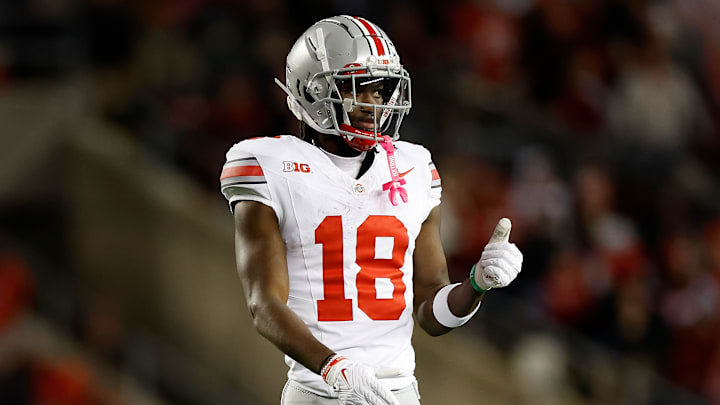A fun irony of the Bears' Draft this year is that despite everyone knowing exactly what they're going to do with their first pick, they're still one of the more mysterious teams in the Top-10. There's an (kinda cringey hipster) argument to be made that what they do with their ninth pick is almost more interesting than what they do with their first.
Besides quarterback, the Bears' roster holes are pretty obvious – they still need an elite pass rusher to go alongside Montez Sweat, they still probably need another young pass-catcher, and it wouldn't kill them to invest a little more on the offensive line. All three of those could easily be handled if they stick at nine, which weirdly enough feels like the least possible outcome at this point. Yet, all the talk has been about how much the Bears could get if they traded down off nine, which isn't wrong. BUT, what if the Bears traded up? Assuming that the Malik-Nabers-Will-Go-Before-Maring-Harrison smoke is just that, would it be worth trading *up* to give Williams the best wide receiver in the draft? That's not rhetorical, I'm asking you.
We're going to assume that they'll have to trade up to 4 – where the Cardinals are – to get Harrison. Maybe that'll change, but we'll cross that bridge when we get there. If the Bears want to be brave make a trade up for Harrison, here's how they should do it.
Two packages the Bears could offer to trade up for Marvin Harrison Jr
Bears get: 1.4 (2024) AZ 5th (2025)
Cardinals get: Bears 1st (2025), Bears 4th (2025) CB Kyler Gordon
It's admittedly a lot to give up, but that's life when you're trying to climb in the Draft. Why would the Bears do it? Because now you have DJ Moore, Keenan Allen, and Marvin Harrison Jr. It's legitimately that simple. They immediately become one of, if not the, best wide receiver groups in the NFL, and Caleb Williams doesn't have to go through the hell that Justin Fields did during his first few years as a pro. Ideally the Bears' first round pick isn't that high next year – if it is, something went very wrong – and so losing it wouldn't necessarily be the end of the world. They also have two seconds next year, which certainly is not the same as a first, but does help mitigate the loss of Top-100 picks in this trade.
Losing a young, ascending cornerback like Gordon would be tough, but the Bears already have young secondary stars in Jaylon Johnson and Jaquan Brisker. They also have Greg Stroman, Terell Smith, and Tyrique Stevenson, all of whom flashed at times last year. Secondary is a real position of need in Arizona, and Gordon would immediately slot in as one of their better players.
Bears get: 1.4 (2024), AZ 7th (2025),
Cardinals get: Bears 3rd (2024) Both Bears 2nd (2025), OL Teven Jenkins
This one's a little more wild. The good news is that the Bears would get to keep their first round pick next year, so everyone can stop freaking out about that. The bad news is that they'd basically lose everything else. Losing their third round pick this year would basically mean that Williams and Harrison make up their entire 2024 Draft class, which is probably about as good as a two-player draft class can be. But, you know, it's still a two (maybe three!) player draft class.
They'd also lose most of next year's premier draft capital, too. But if they feel this year's worth the really big swings, then maybe that's okay? Maybe they're a real "we'll deal with that later" type of organization? It (mostly) works for the Rams and the Saints. Jenkins is a tough loss, but Ryan Poles has shown a shrewd ability to scout linemen, and Jenkins has a hard enough time staying healthy to wonder how well a huge theoretical contract extension will age. Let the Cardinals deal with that decision and go get your next star wide receiver. If they beat the Packers a few times, no one's going to be that sad about a 2nd round pick.
